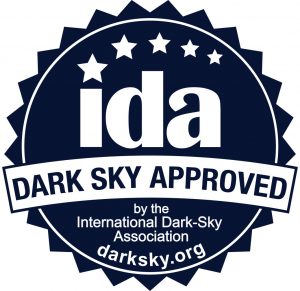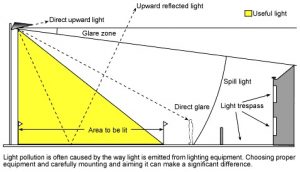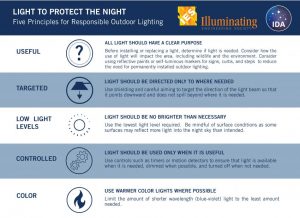 IDA List of Dark Sky Friendly Lighting
IDA List of Dark Sky Friendly Lighting
The knowledge surrounding Light Pollution is changing rapidly and how the Community responds at all levels is also changing.
LFA Guidelines Address Colour Temperature
With the advent of the LED, IDAVic is concerned about the potential negative effects of blue-rich white light, even from fixtures with proper shielding. You can find articles concerning the potential hazards of blue-rich white light sources on our Resources page. The scientific evidence has solidified around its conclusions.
The case against blue light is well founded with regard to discomfort glare, circadian rhythm disruption, light scattering, skyglow and biological system disruption in wildlife.
Outdoor lighting with high blue light content is more likely to contribute to light pollution because it has a significantly larger geographic reach than lighting with less blue light. In natural settings, blue light at night has been shown to adversely affect wildlife behavior and reproduction. This is true even in cities, which are often stopover points for migratory species. There is now evidence that blue light can damage cells in the human eye leading to macular degeneration over time.
Some Background on Australian Standards for Exterior Lighting
Standards Australia is the organisation which formulates, publishes and distributes documents covering a vast range subjects of which lighting and more specifically exterior lighting is one which is of interest to astronomers. An increasing number of Standards are becoming joint Australian and New Zealand documents.
It should be noted that Standards Australia is but one of the sources of documents used by planning bodies including local government (councils etc), State and Federal governments. Councils develop their own Development Control Plans (or similarly titled documents) which can be simple plans through to major and influential pieces of local legislation. State Planning department often co-ordinate local government activities as well as producing over-riding plans. A good example of the latter is the Orana Regional Environmental Plan #1 which is designed to protect the night skies around the Siding Spring Observatory. Federal Government plans include those issued by the Civil Aviation Safety Authority.
Standards Australia have a number of committees dealing with lighting and associated matters. The ASA is now represented on two committees – LG2 (Road Lighting) and LG10 (Obtrusive Lighting). We have requested membership of the Sports Lighting Committee but without success at present.
The main Road Lighting Standards which have an effect on skyglow are
- AS/NZS1158.1.1 – 1997 Road Lighting (Vehicular)
- AS/NZS1158.3.1-1999 Road Lighting (Pedestrian Area) This Standard is currently under review.
- AS1158.4 – 1984 Supplementary Lighting at Pedestrian Crossings (of lesser relevance).
Both vehicular and pedestrian Standards have Upward Waste Light Ratio limits with intensity limits at the higher angles (80 & 90 deg) being specified in the Pedestrian Area document. This Standard also caters for minor roads (residential streets) so it is of considerable importance to the dark sky movement.
The Australian Standard AS4282 on “The Control of the Obtrusive Effects of Outdoor Lighting” was issued in October 1997 and revised in 2019. It provides guidelines for planning authorities to ameliorate the effects of light pollution in the vicinity of observatories. These guidelines are not mandatory, but may be drawn to the attention of a given planning authority by any concerned party. Acceptance as a designated observatory does not imply any form of legal status. Nevertheless, it should assist the observatory in presenting a stronger case for protection against obtrusive lighting.
The Sports Lighting suite of Standards is quite large as it covers a general document (most important) – AS2560 Sports Lighting – General Principles, with separate Standards covering the different sports but all are referred back to the main document for the important general requirements.
It should be noted that all Standards are not mandatory but any disregard for the requirements causing incidents which could lead to litigation obviously places the person or organisation responsible for the installation in a difficult situation. In the case of Road Lighting where State Government subsidies are provided for Councils etc. such installations must comply with all of the relevant Standards in order to receive subsidies.


